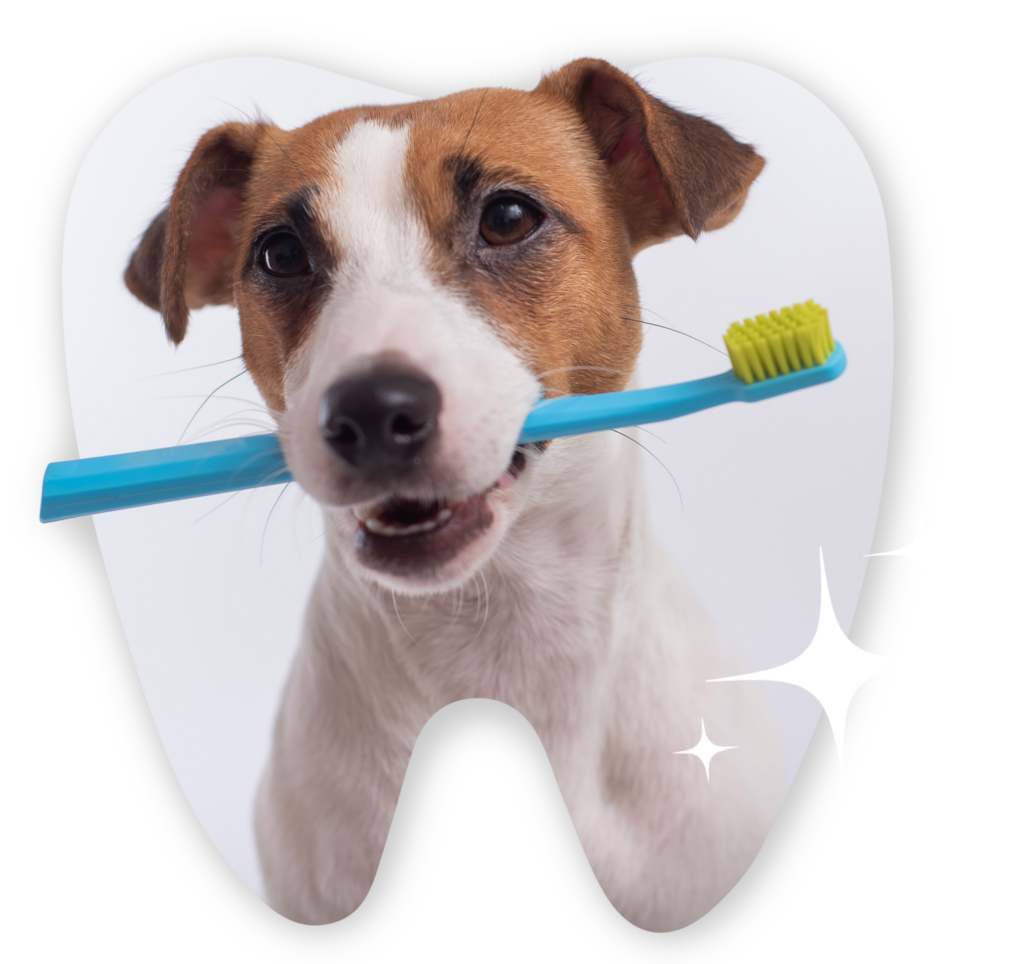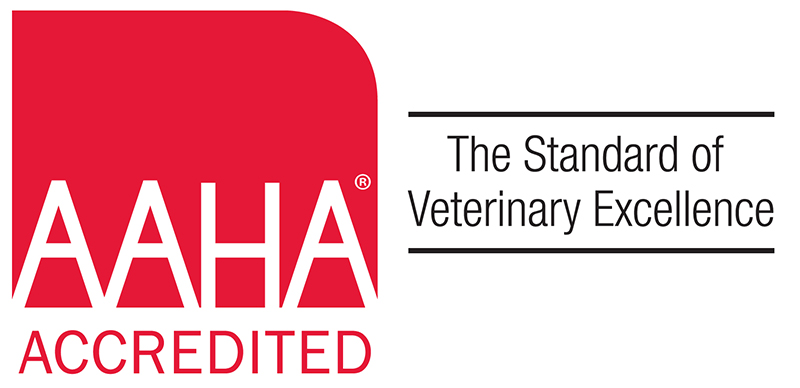Dental Days Deal
$100 off Dental Cleanings
For new and existing clients!
Call (936) 756-3318 to schedule a cleaning today!

Aug 19 – Sept 30, 2024
*New and existing clients. Canine and feline only. Not valid with other offers. Not redeemable for cash. May use offer on multiple pets within the same household. Not applicable for membership or wellness plans.
The American Veterinary Dental Society estimates that more than 60% of dogs and cats show signs of oral disease by 3 years of age. Our pets obviously can’t brush their own teeth or take care of their oral health, so they rely on us to do it for them. Part of keeping their teeth and gums healthy involves scheduling a professional dental cleaning at least once a year at our clinic. This can help prevent conditions like bad breath, gum disease, and other oral infections. It can also prevent the need for extractions down the road.
At Triangle Animal Clinic, our veterinarians and technicians check your pet’s mouth as part of every routine comprehensive wellness visit. We’ll make note of any concerns and would be happy to schedule your pet’s teeth cleaning before you leave. In addition to teeth cleaning services, we can provide guidance and tips on how to best care for your pet’s teeth and gums at home.
How to Tell If Your Pet Needs Dental Care
If you’re unable to have your pet’s teeth professionally cleaned annually, it doesn’t necessarily mean they’ll develop oral disease, but it’s still important to know the signs associated with dental problems. The following is a list of common symptoms of oral issues in dogs and cats.
Bad breath
Tartar buildup or discolored teeth
Excessive chewing or drooling
Broken, loose, or missing teeth
Swollen Gums
Bleeding in or around the mouth
Reduced appetite
Trouble Eating

What to Expect at Your Pet’s Teeth Cleaning Visit
Before the Cleaning
Each dental cleaning begins with an exam of the mouth and blood work. If no concerns are found in the lab results, we will place an IV catheter for the safe delivery of anesthesia and fluids. Next, we will administer general anesthesia prior to completing a more thorough evaluation of the mouth.
During the Cleaning
We will then clean all your pet’s teeth using an ultrasonic scaler instrument and remove bacteria and plaque under the gum line via scaling and root planing. Our team will also take X-rays of the teeth, which allows us to view below the gum line. The final step involves polishing the teeth and administering fluoride treatment.
After the Cleaning
If we find any oral concerns that require treatment, we will discuss them with you as well as the treatment options, which may include extraction, bonded sealants, or local antibiotics.



